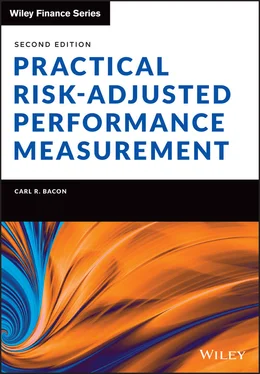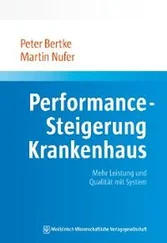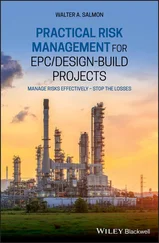A more recent, and extremely relevant, example in the context of today's markets is the liquidity crisis at the LF Woodford Equity Income Fund (WEIF). 5 WEIF, an open-ended investment fund, was forced to suspend dealing in June 2019, to avoid a fire sale of unlisted assets, triggered by the attempted withdrawal of £250 million, or 4%, of the fund's assets by Kent County Council. In the preceding weeks, following a period of poor performance, investors had already withdrawn in excess of £500 million, increasing the already high percentage of unlisted, illiquid assets. The fund had previously circumvented a 10% limit on illiquid assets by bundling up the fund's unlisted assets and listing them on the Guernsey-headquartered International Stock Exchange which had barely any trading activity and was unable to provide sufficient liquidity. 6 Extraordinarily, the Governor of the Bank of England said “These funds are built on a lie which is that you can have daily liquidity for assets that are fundamentally not liquid”. 7 WEIF might also be described as a compliance risk failure – for a better comprehension of regulatory arbitrage, pushing the envelope and overpowerful portfolio managers, Owen Walker's Built on a Lie 8 is a remarkably good read. Understanding liquidity risk in both normal and turbulent markets is a crucial element of effective risk control; the relatively recently identified phenomenon of crowded exits is a characteristic of those turbulent markets.
Counterparty risk occurs when counterparties are unwilling or unable to fulfil their contractual obligations, at its most basic through corporate failure. Counterparty exposure could include profits on an OTC derivatives contract, unsettled transactions, cash management, administrators, custodians, prime brokers and – even with the comfort of appropriate collateral – the failure to return stock that has been used for stock lending. Perhaps the most obvious example of counterparty risk is the failure of Lehman Brothers 9 in September 2008.
In the middle office of asset management firms, we are most concerned with portfolio risk, which I define as the uncertainty of meeting asset owner 10 expectations. Is the portfolio of assets managed in line with the asset owner's investment objectives? The consequences of not meeting asset owner expectations can be quite severe. Early in 2001, 11 the Unilever Superannuation Fund sued Merrill Lynch for damages of £130 million claiming negligence in that Merrill Lynch had not sufficiently considered the risk of underperformance. Ultimately the case was settled out of court for an undisclosed sum, believed to be £70 million, the perception to many being that Unilever won.
Credit risk (or issuer risk) as opposed to counterparty risk is a type of portfolio risk. Credit risk or default risk is the investor's risk of a borrower failing to meet their financial commitments in full. The higher the risk of default the higher the rate of interest investors will demand to lend their capital. Therefore, the reward or returns in terms of higher yields must offset the increased risk of default. Similarly, market, currency and interest rate risks taken by asset managers in the pursuit of asset owner objectives would constitute portfolio risks in this context.
I'm sure readers can quickly add to this brief list of risks and extend through various subdivisions, but I'm fairly certain any risk I've not mentioned so far can be allocated to one or more of the above categories.
RISK MANAGEMENT VERSUS RISK CONTROL
It is useful to distinguish between the ways portfolio managers 12 and risk professionals see risk. For this purpose, let us refer to portfolio managers as “risk managers” and to risk professionals as “risk controllers”. Then there is a clear distinction between risk management and risk control. As risk managers, portfolio managers are paid to take risk, they need to take risk in order to achieve higher returns. For the risk manager “Risk is good”.
Risk controllers on the other hand are paid to monitor risk; their role is to measure risk and make transparent to the entire firm how much risk is being taken by the portfolio manager (and often from their perspective to reduce risk). The risk controller's objective is to reduce the probability or eliminate entirely a major loss event on their watch. For the risk controller “Risk is bad”.
Risk managers' and risk controllers' objectives are in conflict leading to a natural tension between them. To resolve this conflict, we need measures that assess the quality of return and answer the question, “Are we achieving sufficient return for the risk taken?”
It is helpful to assume that asset owners are risk averse, that is to say, that given portfolios with equal rates of return they will prefer the portfolio with the lowest risk.
Asset owners will only accept additional risk if they are compensated by the prospect of higher returns.
Risk is calculated in two fundamentally different ways: ex post and ex ante. Ex-post or historical risk is the analysis of risk after the event; it answers the question how risky the portfolio has been in the past.
On the other hand, ex-ante risk or prospective risk is forward looking, based on a snapshot of the current securities and instruments within the portfolio and their historical relationship with each other; it is an estimate or forecast of the future risk of the portfolio. Obviously, the use of historical returns and correlations to forecast future risk is problematic, particularly for extreme, low probability events. Increasing the length of the historical track record or increasing the frequency of observations does not always result in an improvement because of the changing nature of markets and underlying securities. Older returns may be less reliable for future predictions, but on the other hand more recent observations may not include the more extreme results.
Ex-post risk calculations and ex-ante risk forecasts are substantially different and therefore can lead to completely different results and conclusions. Differences between ex-post risk calculations and ex-ante risk forecasts provide significant additional information which should be monitored continuously.
For the most part risk managers and risk controllers use dispersion measures of return as a proxy for their perception of risk.
There are several measures of return dispersion that will be discussed in this book and they all measure some aspect of the range of portfolio returns experienced in a particular time period. They all report on what has actually happened during the time period of interest. Even from an ex-post perspective, one can ask whether the return variability truly represents how much risk the asset manager took during the time period or whether one needs to explore the range of possible returns that might have (realistically) happened during the time period.
This is an interesting question but one that is outside the scope of this book. Primarily this book is focused on historical portfolio return dispersion.
1 1Glyn A. Holton (2004) Defining Risk. Financial Analysts Journal 60(6), 19–25.
2 2In truth I did not identify liquidity risk as a separate risk category at the time.
3 3AXA Rosenberg Settles Coding-Error Case with SEC. Morningstar Fund Times, 3 February 2011.
4 4Roger Lowenstein (2000) When Genius Failed: The Rise and Fall of Long-Term Capital Management. Random House.
5 5M. Latham (2019) The Neil Woodford Crisis: An Accident Waiting to Happen? Funds Europe, July–August.
6 6N. Corbishley (2019) Liquidity Crisis at Woodford Equity Fund is Symptomatic of Systemic Problem, Bank of England Warns. Wolf Street, 12 July.
Читать дальше










